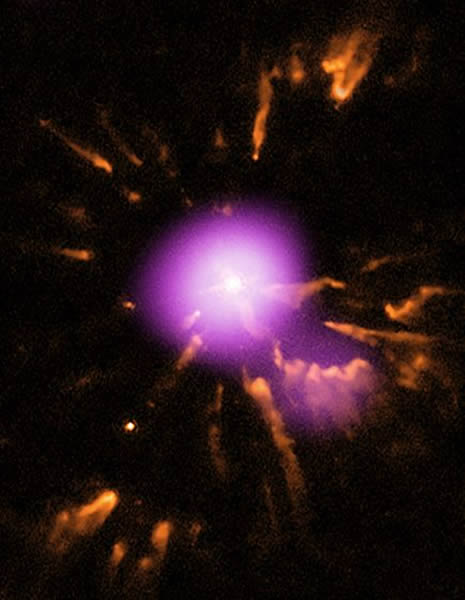Could Our Sun Become a "Zombie" Star?
Data from several space observatories form a colorful closeup of planetary nebula Abell 30.
Like a zombie, a nearly dead star has briefly sputtered back to life—giving a rare glimpse at what may be in store for our own solar system, a new study says.
Located 5,500 light-years away, the reborn star, known as Abell 30, is at the heart of a planetary nebula—glowing shells of gas and dust cast off by a dying sunlike star.
Using NASA's Hubble Space Telescope and Chandra X-ray Observatory to peer inside the nebula, astronomers determined that the star had made what first appeared to be its final gasp 12,500 years ago.
But further scrutiny soon revealed bizarre signs—such as spurts of helium—that Abell 30 had undergone a sudden rebirth about 800 years ago.
"Thousands of years after it had sort of quieted down, then something happened that caused it to become unstable and start throwing off more material—lots of denser blobs of star stuff we see inside the shell," said study co-author William Blair, an astronomer at John Hopkins University in Baltimore.
"The chemical composition of these knots tells us they are coming from deep within the star, indicating the [star] ... had become active once again."
But within 20 years the rapid growth stopped, and the star died—part of the normal life cycle of a star.
"Reborn" Stars Rare
Such "resurrected" stars are rare—only three have been glimpsed in the entire Milky Way, and they're hard to spot: This rebirth phenomenon only happens for a very short time at the end of the star's life.
"A lot of low-mass or sunlike stars have and will do something like this, but we don't get to see it very often, because this phase of evolution is fleeting," said Blair, whose study appeared in August in the Astrophysical Journal.
What's more, "Abell 30 is giving us a peek" into what may happen to our own sun.
Our sun should remain stable for about four to five billion years before it enters into chaotic death throes, blasting and evaporating nearby planets—including Earth.
While the outer planets, such as Uranus and Neptune, "might survive, their atmosphere would likely get burned off," Blair said—"not a pretty time to be watching up close."
Within a few thousand years after its "death," though, the sun may also go through a brief rebirth phase, he added.
National Geographic News
Published November 20, 2012












